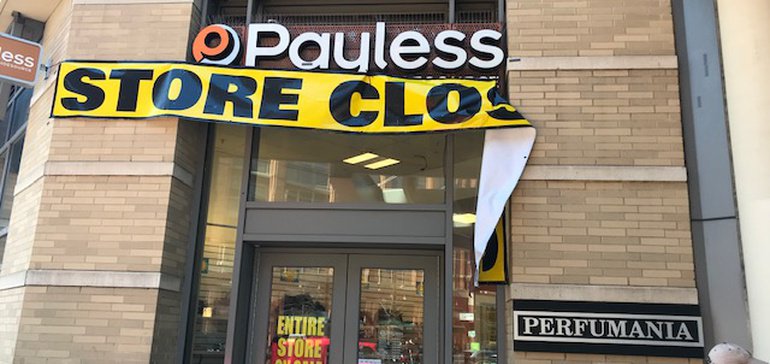AUTHOR Daphne Howland @daphnehowland
Source: retaildive.com, April 2019
Expect more store closures as retail sales growth slows and e-commerce takes a greater share, according to a note from analysts led by Michael Lasser.
Retailers last year boosted their store productivity levels nicely: In the last four quarters, productivity has increased an average of 4.1%, up from average growth of 2.9% in the previous four, according to a UBS report.
Sales per store is a key (and perhaps obvious) indicator when it comes to predicting where and when a retailer might reduce its physical footprint. Over the last 12 months, retailers have shuttered about 1,000 net stores, compared to about 5,000 net closures over the previous 12 months. That easing was helped along by topline improvements last year, and those would have to be sustained to stave off further closures, UBS said.
But they’re unlikely to be, “as the boost from fiscal stimulus fades,” according to UBS analysts, led by Michael Lasser. “This will likely lead to an acceleration in physical store closures in the upcoming year.”
In the third quarter last year, sales per store over the trailing 12 months rose 3.7% year over year to $4.54 million — “a new high” — driven by a 3.6% increase in sales plus a -0.1% decline in stores (to 739,846), according to the UBS team. “Looking forward, we believe that store rationalization needs to accelerate meaningfully as online penetration continues to rise,” he wrote, saying the analysts’ best case estimate is for 75,000 stores to collectively shutter by 2026, if e-commerce penetration rises from today’s 16% to 25%. “For every 100 bp increase in online penetration, 8k-8.5k stores would need to close,” he said. “To put this in perspective, [Amazon’s North America] revenue represents the equivalent of 30k retail stores & it added the sales of 7.7k stores in FY’18.”
That varies by sector, however. Apparel (the UBS estimate is for 21,000 closures), consumer electronics (10,000) and home furnishings retailers (8,000) are set to shutter the greatest number of stores. Some 7,000 grocery stores (or 8% of the base) “could close if grocery eComm penetration rises from 2% currently to 10%” by 2026, while home improvement stores could shutter about 1,000, according to the report.
Furthermore, while e-commerce sales growth has been outpacing overall retail sales growth for years now, that, too, could be reaching a peak, according to other research and observations in recent months. Several retailers have made significant improvements to stores and merchandise that have brought shoppers back in, several formerly e-commerce pure-plays are opening stores themselves, and the cost of fulfillment, paired with the demand for low- or no-cost shipping could lead retailers to entice shoppers to stores in order to have customers shoulder the burden of the last mile.
And then there’s the cost of shuttering a store to online productivity. In all, the productivity measure of a store may soon look different than the metric UBS is employing. “Sales per square foot is a historically traditional measure for evaluating store productivity, and it’s still relevant today,” Macy’s CFO Paula Price told a Shoptalk audience last month. “But … you may have heard [CEO] Jeff [Gennette] say ‘When we close a store, we fire a customer.’ What he means by that is when we close a store we see our online sales in that particular market decrease. … So we have to expand the productivity metric of a store to include online sales.”
Follow Daphne Howland on Twitter

